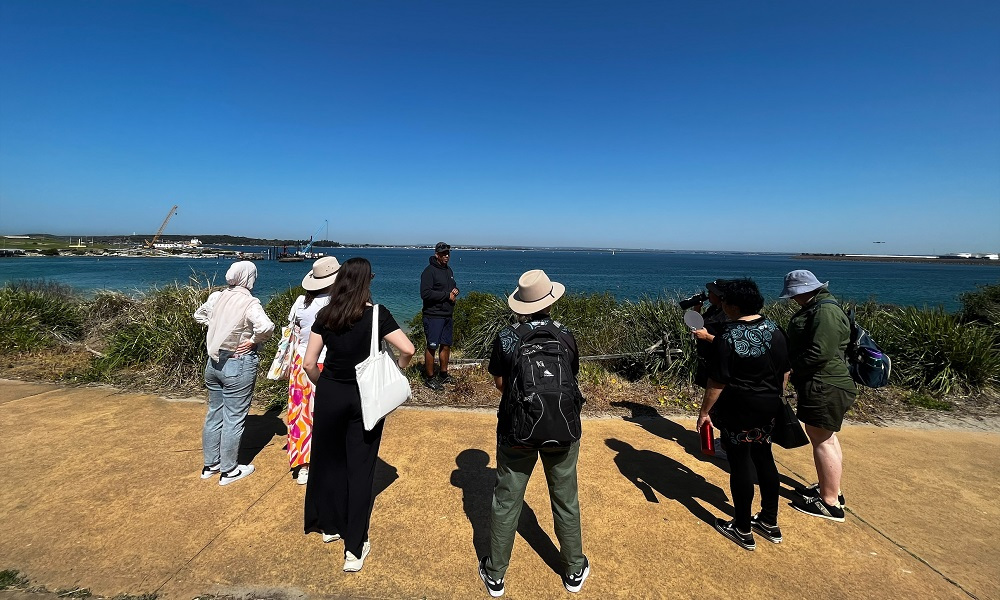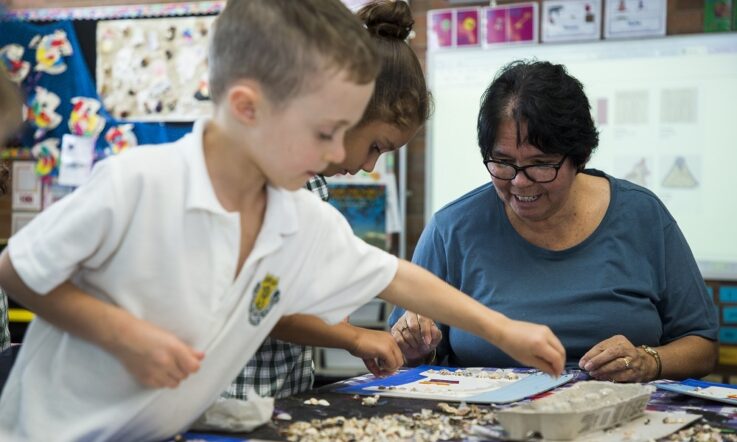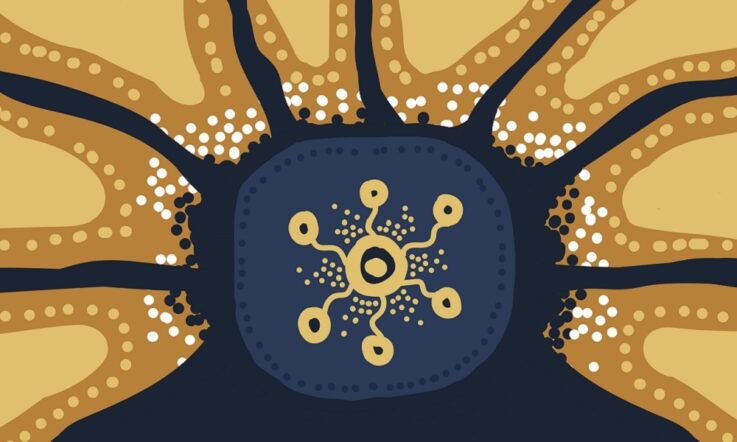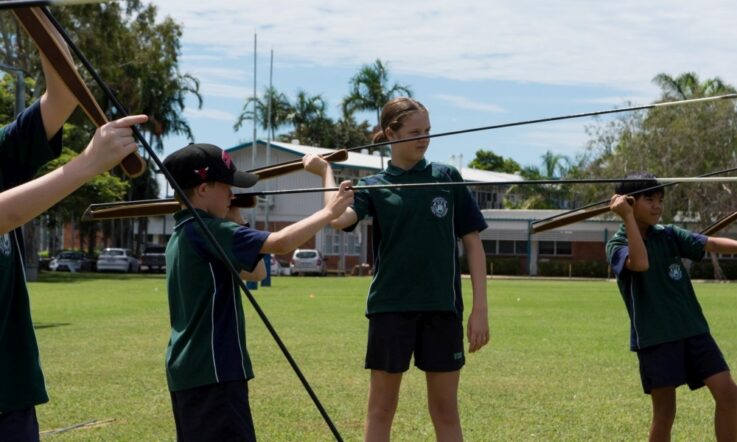The Culturally Nourishing Schooling (CNS) project aims to champion Aboriginal and Torres Strait Islander cultural inclusion and genuine long-term engagement in First Nations communities across New South Wales.
The project, led by UNSW Scientia Indigenous Fellow Associate Professor Kevin Lowe has been implemented in 8 schools in urban, rural and remote settings across NSW. The CNS method came out of a review of research literature (Guenther, 2019) into what was working in Indigenous education.
Lowe and his co-researchers found that they were able to identify that schools experiencing success in engaging Aboriginal students in their community had many attributes in common, including the fact that they had positive relationships with the students’ families and communities, and an ability to tap into the broader aspirations of that community.
Julia Dimitriadis teaches English and Aboriginal Studies at Matraville Sports High School, and she participated in CNS in 2023. Her school is located on Dharawal Country, and of the 400 students enrolled 40% are from an Aboriginal or Torres Strait Islander background.
The cohort of 5 teachers who participated in CNS from Matraville Sports High School last year were all in their first year at the school. They represented a range of different faculties, including mathematics, science, English and PDHPE.
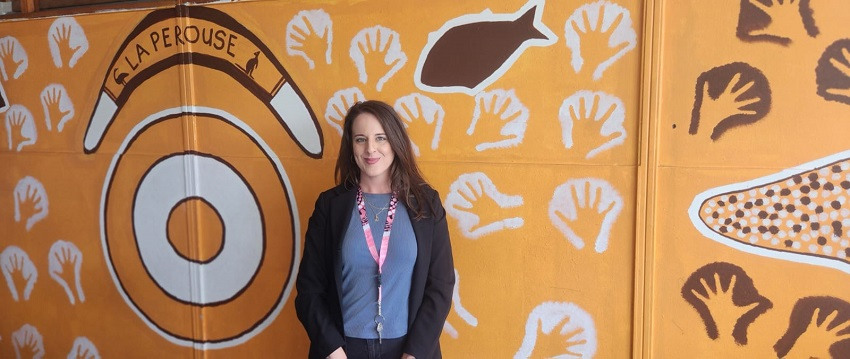
Julia Dimitriadis teaches English and Aboriginal Studies at Matraville Sports High School.
They met several times each term to participate in scaffolded professional learning that involved working with local cultural mentors, learning from Country immersion experiences, targeted curriculum workshops, professional learning conversations and reading, and pedagogical coaching toward Culturally Nourishing Pedagogies.
Strengthening relationships with community
The CNS project focusses on strengthening teachers’ leadership skills and the development of deeper relationships with local communities.
As a new teacher to the school, Dimitriadis says that she didn’t know much about the local community when she first started, but understood that as an Aboriginal Studies teacher, it was imperative that she began establishing connections in the community.
‘In order to authentically teach Aboriginal studies and Aboriginal perspectives, I think that you need to have that community focus and bring things back to community,’ she tells Teacher.
‘Coming into an environment where I had no community connections, the project has really helped me make those connections a lot easier, giving me opportunities to be in a room with cultural mentors who can give me feedback and whose advice I can seek.’
Dimitriadis says she has had to lean on the support of her colleague and cultural mentor, Shallan Foster.
‘She went to Matraville herself, so she's been in the community for such a long time. She's lived in La Perouse her whole life, so as a visitor into the community I’ve had to use some of her community links. Rather than go out on my own and make those connections myself, Shallan has helped me make connections. When I have ideas, Shallon knows which people in the community to direct me to,’ Dimitriadis adds.
This support has also benefited students at Matraville. Dimitriadis says that last term, students in one of her year 10 classes were exploring Aboriginal oral expression.
‘Shallon is one of the main people involved in the Gujaga Foundation’s language revitalisation. I was able to take my class out on Country to visit Gujaga to learn about language revitalisation and it's something that is very specific to Dharawal Country, but it's also something that I would not have been able to facilitate on my own,’ she says.
Incorporating Indigenous knowledges and cultures in the classroom
The CNS project aims to support teachers to feel more confident to incorporate Indigenous knowledges and cultures in the classroom.
‘The Culturally Nourishing Schooling program has helped me massively with my own confidence in lots of different ways,’ Dimitriadis says.
‘CNS has helped my confidence by reminding me that Aboriginal perspectives are not just about teaching Aboriginal history, it's not just about teaching about culture. It’s about the pedagogical things like building relationships and trying to expand your relationships with community. Without a network of support like CNS, I feel like it would just be harder. The work would take a lot longer. Some teachers may not even pursue the work because they don't have that support system around them,’ she adds.
Dimitriadis says that CNS has also taught her that there are so many things that work well in Aboriginal education that have nothing to do with Aboriginal culture.
‘Listening to students, building relationships with students, going through those community consultation protocols are all things that we can all do without feeling like we need to be an expert on Aboriginal culture or on Dharawal Country or Dharawal language,’ she says.
The impact on students’ sense of identity
According to Dimitriadis, her cohort’s involvement in CNS has helped them to better understand students’ sense of identity, and this has in turn impacted student engagement in school and their future aspirations in a positive way.
‘I've noticed with myself and a lot of my colleagues that the program has given us a lot of confidence to teach about Aboriginal cultures and to teach about Aboriginal knowledges. Kids are then getting to go to their PDHPE classes and learn about Aboriginal excellence or go to science and learn about the ecosystem of the Buriburi, which is the humpback whale, the local totem of the area. That has to be empowering,’ she says.
Dimitriadis says that by embedding Aboriginal and Torres Strait Islander perspectives into her teaching, she’s also showing students that as a non-Aboriginal educator, she is trustworthy.
‘I’m showing them that in my classroom, Aboriginal and Torres Strait Islander cultures, knowledges and ways of learning are authentically embraced, and they have a presence in my classroom. In that way, I think that I’m also communicating implicitly to students that I do value them and that there is so much cultural wealth that they bring into the classroom.’
References
Guenther, J., Harrison, N., & Burgess, C. (2019). Aboriginal voices: Systematic reviews of indigenous education. The Australian Educational Researcher, 46, 207-211. https://doi.org/10.1007/s13384-019-00316-4
Consider your own confidence in embedding Aboriginal and Torres Strait Islander knowledges and cultures in your classroom. Is this an area that you need more support in? Where would you get the professional learning you need to build on this confidence?
In what ways do you celebrate students’ individual cultures and identities in your classroom? In what ways does this impact their engagement at school and future aspirations?
